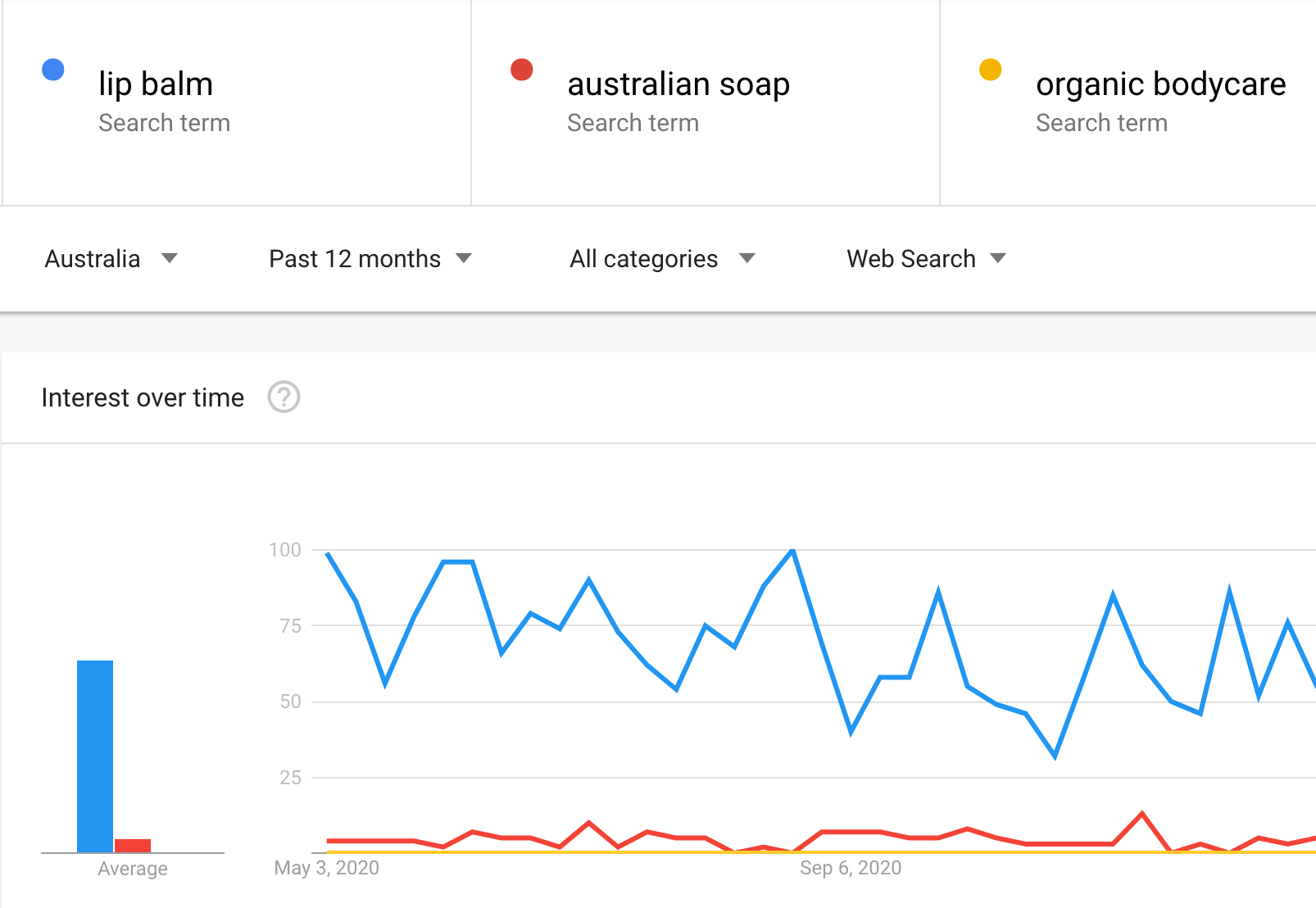
SEO for Online Shops
A high priority for an online shop is to get more visitors to the website. This can be done through Search Engine Optimisation (SEO).
Google loves text – so writing text for your product descriptions is the focus of this article on SEO for online shops.
SEO is great for online shops, as each product and category (or collection) page is able to be optimised. If your shop has 50 products, that’s 50 opportunities to optimise the site.
Search Terms
Understanding what search terms people use to find your products is an important first step in optimising the site for search engines. The method is to write these search terms into the text as part of the product description. The key is to optimise different pages for different search terms.
Let’s use an example of an Australian bodycare retailer, specialising in premium, gift boxed skincare. This shop sells:
- Mousse
- Lip Balm
- Moisturisers
- Soaps
If this was your shop, you may wish your site to rank well on Google for the search terms:
- Organic Bodycare
- Organic Skincare
- Australian Soap
- Australian Gift
You may also want the product pages to rank well for their particular brand or description. For example:
- Lip Balm
- Vegan Friendly Moisturiser
- Charcoal Soap
- Olay Regenerist Moisturizer
To help you determine what search term to aim for, run your ideas through Google Trends. Google Trends is a free, online tool that is very easy to use. Find it here https://trends.google.com.
In this example, we can see the search term ‘lip balm’ (blue) gets a lot more searches than either ‘Australian soap’ (red) or ‘organic bodycare’ (yellow). Therefore optimising a page for lip balm is likely to get you more traffic than optimising it for organic bodycare.
How-ever you don’t want to optimise every page for lip balm. If you have 50 products, use 50 different search terms, one for each product page. Avoid using the same search term more than once on the site. As you get more experience, you may consider broadening out the search term beyond the product name or type, to use search terms like 'valentine gift'.
Page Types – Homepage vs Category vs Product
The online shop is likely to have:
- A homepage that features a broad cross section of products
- Several category or collection pages that group products together, by type or brand.
- Lots of product pages
The homepage is likely to be optimised on the business name. If this shop is called 'Australian Skincare' then that is likely to be a good search term to optimise the homepage on.
The category or collection pages provide the best opportunity to optimise the site. For example, if this online shop sells 5 different shampoos, then it will probably have a category page for shampoo. This category page will group together products like:
- Aloe Vera Shampoo
- Lavender Shampoo
- Vegan Friendly Shampoo
- Anti-Dandruff Shampoo
- Children’s Shampoo
5 products that are grouped together by type.
As the category page provides the best opportunity to optimise the site, we’ll start with is.
Category (or Collection) Pages
Most category pages will group together a bunch of like products. There will be a product image, and on top of that image, or directly underneath, there will usually be the product name and price. A visitor to the website will scan or scroll through the images until they see one that interests them and then click on it to be taken to that product’s specific page.
Google loves text. Category pages, by default, often don’t have much text. They have a lot of images. To optimise your online shop for Google searches you’re going to need to write text on the category page which includes the chosen search term or keyword.
Write 300 words or more about the category and add the search term in 3 times. We don’t want these 300 words to appear at the top of the category page, as this will spoil the experience for the person visiting the site, who really doesn’t want to read a lot of text. Google might love text, but often the human gets bored after the first 10 words!
So what to do?
And here’s the trick. Place the text at the bottom of the page. Neat eh? Don’t believe me? Well here’s an example of a big online retailer that does just this thing.
The iconic is a big online retailer in Australia for women’s fashion. Here’s their category page for handbags. This page has 52 handbags on page one of the category search – not a paragraph of text to be seen until you scroll right down to the bottom.
If the big online retailers are doing it, you can be fairly sure they're doing it for a reason – and the reason is to optimise the site for Google searches.
Product Pages
Product pages are much harder to optimise, as writing a 300 word description is going to sound like you are waffling on.
Some product pages only have the text to the right of the product image available. But some product pages allow for a longer description below the image, main description and Add to Cart button. If your site allows for a longer description, take advantage of that and use it. If not, aim for 150 words for the description, adding the search term in twice.
Here’s a few product description ideas to get those 150 words.
- Ingredients
- Size, length or volume
- Packaging
- When best applied or used
- Great for……
- Ideally……
- If you like this product you might also like…
- This product matches, goes with, fits on, connects with…
Ideas for the longer description
- Guarantee
- Accessories
- What it’s made out of
- Does it need any special treatment
- Does it match something really well
- Who’s ideally going to like this
- When and where does this product excel?
- What size is it
- What is the product code
- Shipping info
Further Reading
Woocommerce, a popular WordPress plug-in has its own strategies about SEO for online shops. Read their article here.
Final Thoughts
It’s mighty hard to go through 50 or more products in one go. Give yourself a goal of optimising 2-3 products a week or a month, prioritising your best sellers.

SEO Course
A practical, step-by-step video course with screenshots, examples, explanations and demonstrations. Carefully created and produced video tutorials for your learning.
Especially suitable for e-commerce sites or multi-page websites.


